Top Ten Tourist Attractions in Turkey from toptenturkey.com1. Haghia Sophia Museum - Istanbul
Haghia Sophia Museum, the great masterpiece of Byzantine art. It was built by Justinian in 6th century AD and is the 3rd church to occupy this site. At the time it was built, it was the largest church in existence. The church was sacked by the Latins during the 4th crusade in 1204 and many of its treasures taken to the west.
When Contantinople (Istanbul) was conquered by the Ottoman Sultan, Mehmet II in 1453, it was converted into a mosque. Since 1936,
by Ataturk's order it has been a museum. The interior is decorated with wonderful Byzantine mosaics from 6th to 13th century AD.
2. Blue Mosque - Sultan Ahmet Camii - Istanbul
Blue Mosque, Sultan Ahmet Camii is one
of the most beautiful mosques in the world. Its name is derived from the blue tiles decorating its interior. Completed in 1616 by Mehmet Aga, Imperial Architect and one of the students of the great architect Sinan. Its grace and beautiful proportions were intended to reflect the splendour of Islam. It was the supreme
Imperial Mosque of the Ottoman Empire. The famous blue and green Iznik tiles on the walls are bathed in glorious light that is filtered through 260 windows. On summer evenings there are light and
sound shows in the grounds.
3. Pamukkale - Hierapolis- Denizli
Pamukkale is one of the natural wonders of the world. It is a unique geological formation formed over 14.000 years. The spring water at Pamukkale has therapeutic qualities and since antiquity has been said to
cure rheumatism, kidney and heart diseases.
Hierapolis, means sacred-city and its history goes back 6th C BC. At its peak the population reached about 100,000. The ruins at Hierapolis cover an extensive area. The theater, Temple of Apollo, Colonnaded Street, Byzantine Gate, Plutonium and Necropolis (Cemetery) are some
of the highlights of the city. The Necropolis has approximately 1000 tombs and is the largest in Asia Minor.
4.Ephesus - Efes
Ephesus is one of the best-preserved ancient cities in the world with a history dating back the 12 C BC. It was an important trade and religious center. During the Roman period its population reached Approx. 250,000.
One of the seven wonders of the world, Temple of Artemis was in Ephesus. It is also the site of one of the Seven Churches of Revelation. St. Paul lived and preached for about 2 years in Ephesus.
Today it is estimated that between 15-20% of the city has been excavated. Some of the highlights are the Odeon, Celsus Library, Great Theater, Commercial Agora, Terrace Houses, Blue Marble Street, Scholistica baths and Brothel.
5. Cappadocia Region
One of the geological wonders of the world. Cappadocia is a high plateau in Central Turkey at an altitude of 3270 ft / 1000 m. It lies in a triangle formed by the three main towns of Kayseri, Nevsehir and Nigde. The history of Cappadocia begins 60 million years ago with the eruption of 2 volcanos, covering the area with lava and tufa.
In later periods rain and wind eroded the land and created unusual valleys, canyons and cones. For many centuries Hittites, Assyrian Colonies,Greeks and Romans lived in the region. Cappadocia is also a very important region in early Christian History. There are over 600 hundred
rock-cut churches built by monks and hermits between the 4th and 11th centuries. In some of these, church walls have been decorated with wonderful frescoes depicting scenes from the Bible.
6. Ancient City of Pergamon
The history of the city starts in the 8th C BC when Aeolian Greek colonies settled in the area. The city was founded on a hill overlooking the Caicos plain. During the reign of Eumenes II in the 2nd C BC, it became one of the cultural and intellectual centers of the day. With the invention of pergamena (parchment) its library grew to rival in size, the great library of Alexandria.
Pergamum was one of the Seven Churches of the Revelations. The famous Roman physician, Galen was born and studied in Pergamum.The ruins are separated into 3 parts, the Acropolis, Red Courtyard and Asclepion, which was the cure center of Pergamum.
7. Sardis
Sardis was the capital of the Kingdom of Lydia. It was founded on the banks of the famous golden-bearing river Pactolus. The legendary
King of Lydia Croesus (560-540 BC) controlled most of western Asia Minor and made generous offerings to the temples of Delphi, Artemis and Didyma.
In the 7th C BC the Lydians invented the first coinage in history. They developed methods to extract gold from metal ores. Some of the highlights are the temple of Artemis, one of largest temples in Asia Minor and the Roman Gymnasium complex. Part of the Gymnasium was converted into a synagogue in 3rd C BC. Sardis is one of the Seven Churches of Revelation.
8. Ancient city of Aspendus - Antalya
Aspendus is located in the ancient region of Pamphylia. According to some experts the earliest settlers of the city were the Hittites.
The name Aspendus is of Anatolian origin. The Greek colonies arrived here around 13th C BC and took over an existing settlement. Alexander the Great claimed the city from the Persians and during the Roman period it was an important port city.
The city was founded on a hilltop and spread down to the plains. Aspendus has one of the best preserved and largest Roman theaters in Turkey. It was built in the 2nd C AD. The city's aqueducts are also well preserved and worth a visit.
9. Commagene Kingdom at Mt. Nemrut
One of the most spectacular sites in Turkey especially at sunset. Mt Nemrut (approx. 2552m) is an extension of the Taurus mountain range in southeastern Turkey. After the division of Alexander's Empire into three, the Seleucids established the relatively small and wealthy Commagene Kingdom in the region.
In 62 BC, Antiochos I became king of Commagene and developed his kingdom as a strategic crossroad on the important trade routes between Syria, Mesopotamia and Rome. The famous sanctuary was built by Antiochos I for himself as a funerary monument. It is a conical tumulus with a height of 50m and 150m diameter. There are colossal heads of Apollo, Zeus and Antiochos I.
10. Gallipoli Anzacs - Çanakkale
The slim peninsula on the northern side of the Dardanelles has been designated a National Park.
In 1915, Allied warships tried to force their way through the straits with the intention of opening a supply line to Russia via the Black Sea. Allied landings on the Gallipoli Peninsula were finally beaten off by the Turks following bitter warfare.
Casualties were high on both sides and today several war memorials stand in the attractive landscape of pine forests, green hills and pretty beaches.
 dia mu titip beberapa paket indomie di salon lalu nanti suami saya yang ngambil ke situ...mudah2an aja dia tepatin janjinya....coz selama 2 tahun disini saya ga pernah makan lagi yang namanya indomie or mie bungkus indonesia yang begitu......pernah sobat saya vini kirim dari inggris coz di inggris ada toko cina yang jual khusus makanan indonesia....ehhhh kagak nyampe....entah nyangkutnya dimana...buruk sangka dech sama petugas posnya (maaf ya pa pos bukannya nyangka yang bukan2 heheh)...trus saya udah tanya ke KBRI di ankara, kali aja di koperasi KBRI jual indomie, ternyata tidak...yahhh mudah2an dech sodaranya ayten ini tepatin janji
dia mu titip beberapa paket indomie di salon lalu nanti suami saya yang ngambil ke situ...mudah2an aja dia tepatin janjinya....coz selama 2 tahun disini saya ga pernah makan lagi yang namanya indomie or mie bungkus indonesia yang begitu......pernah sobat saya vini kirim dari inggris coz di inggris ada toko cina yang jual khusus makanan indonesia....ehhhh kagak nyampe....entah nyangkutnya dimana...buruk sangka dech sama petugas posnya (maaf ya pa pos bukannya nyangka yang bukan2 heheh)...trus saya udah tanya ke KBRI di ankara, kali aja di koperasi KBRI jual indomie, ternyata tidak...yahhh mudah2an dech sodaranya ayten ini tepatin janji ....untuk info katanya klo mu beli indomie tuh ada di istanbul (lupa nama restorannya) tapi mahal bo..satu porsi sekitar 60YTL = 37,5 USD (kurs sekarang 1 USD = 1,6 YTL)
....untuk info katanya klo mu beli indomie tuh ada di istanbul (lupa nama restorannya) tapi mahal bo..satu porsi sekitar 60YTL = 37,5 USD (kurs sekarang 1 USD = 1,6 YTL)
 ...mudah2an kerinduan ini segera berakhir....hehehhe
...mudah2an kerinduan ini segera berakhir....hehehhe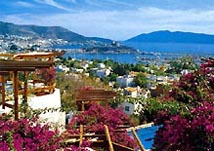


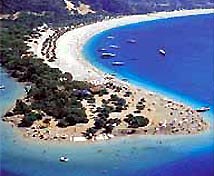

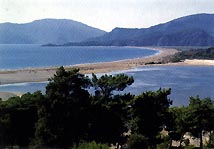
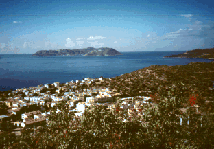
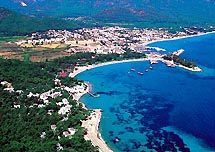
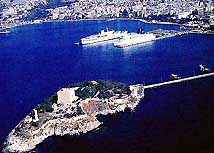

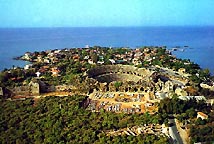
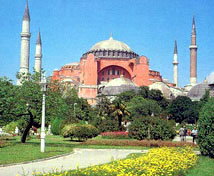

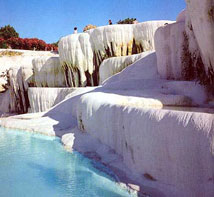

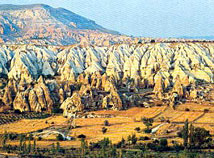

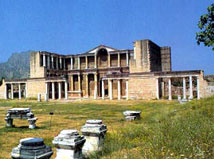

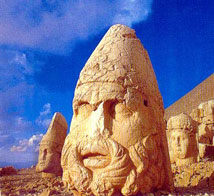




 tapi memang terharu mendengarkannya
tapi memang terharu mendengarkannya ) or sekolah (pengennya dapet beasiswa ke luar negeri) , tapi kepergian saya ke luar negeri ini karena diboyong suami...datang ke alanya turki karena saya menikah dengan yasar yang asal alanya.
) or sekolah (pengennya dapet beasiswa ke luar negeri) , tapi kepergian saya ke luar negeri ini karena diboyong suami...datang ke alanya turki karena saya menikah dengan yasar yang asal alanya.





 ...tapi karena musibah tsunami itu, jadinya indonesia terkenal karena tsunaminya selain terkenal juga karena negara paling banyak mengirimkan jemaah hajinya
...tapi karena musibah tsunami itu, jadinya indonesia terkenal karena tsunaminya selain terkenal juga karena negara paling banyak mengirimkan jemaah hajinya


 tapi tetep aja beaıtiful euy (*maksa*).....
tapi tetep aja beaıtiful euy (*maksa*).....

 ....berarti emang ga ada salahnya mengajak bicara anak dalam berbagai bahasa....mudah2an aja si anak dapat mengerti dan tidak bingung......
....berarti emang ga ada salahnya mengajak bicara anak dalam berbagai bahasa....mudah2an aja si anak dapat mengerti dan tidak bingung......